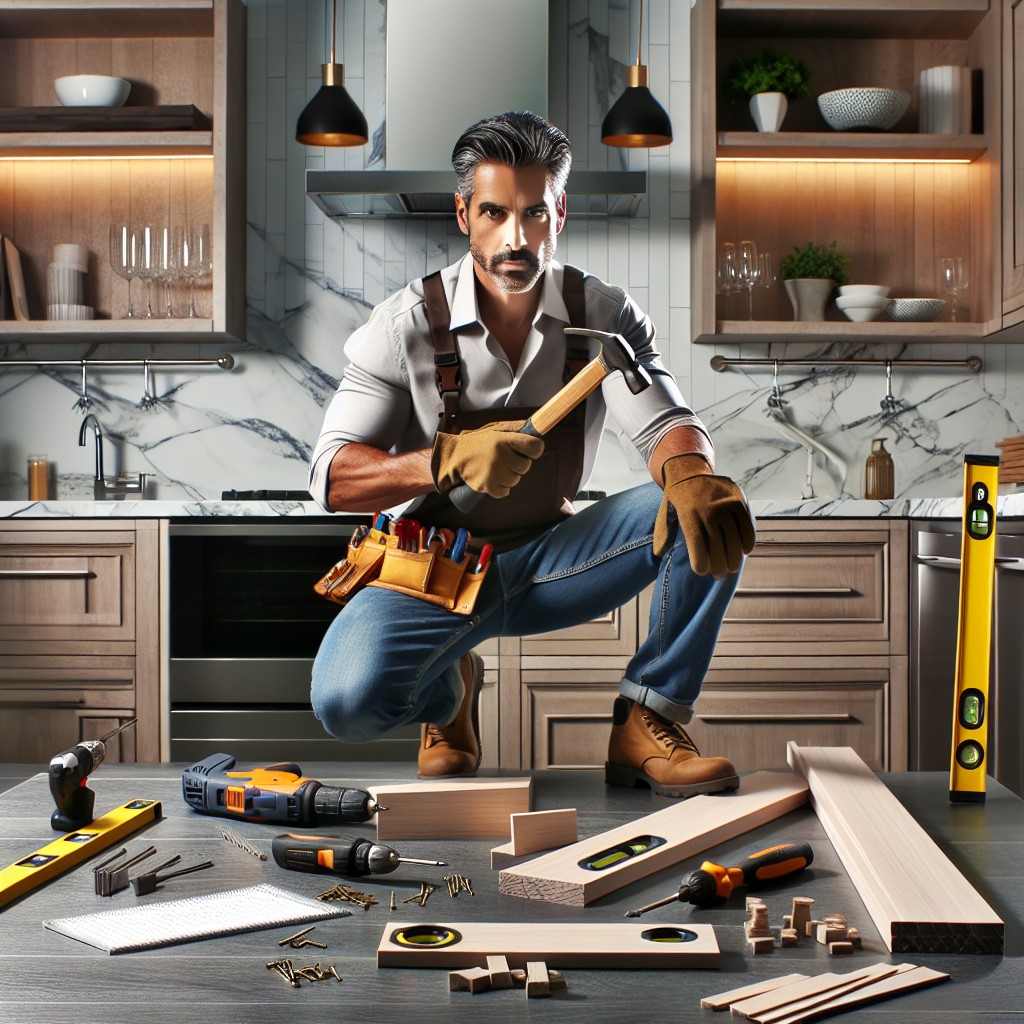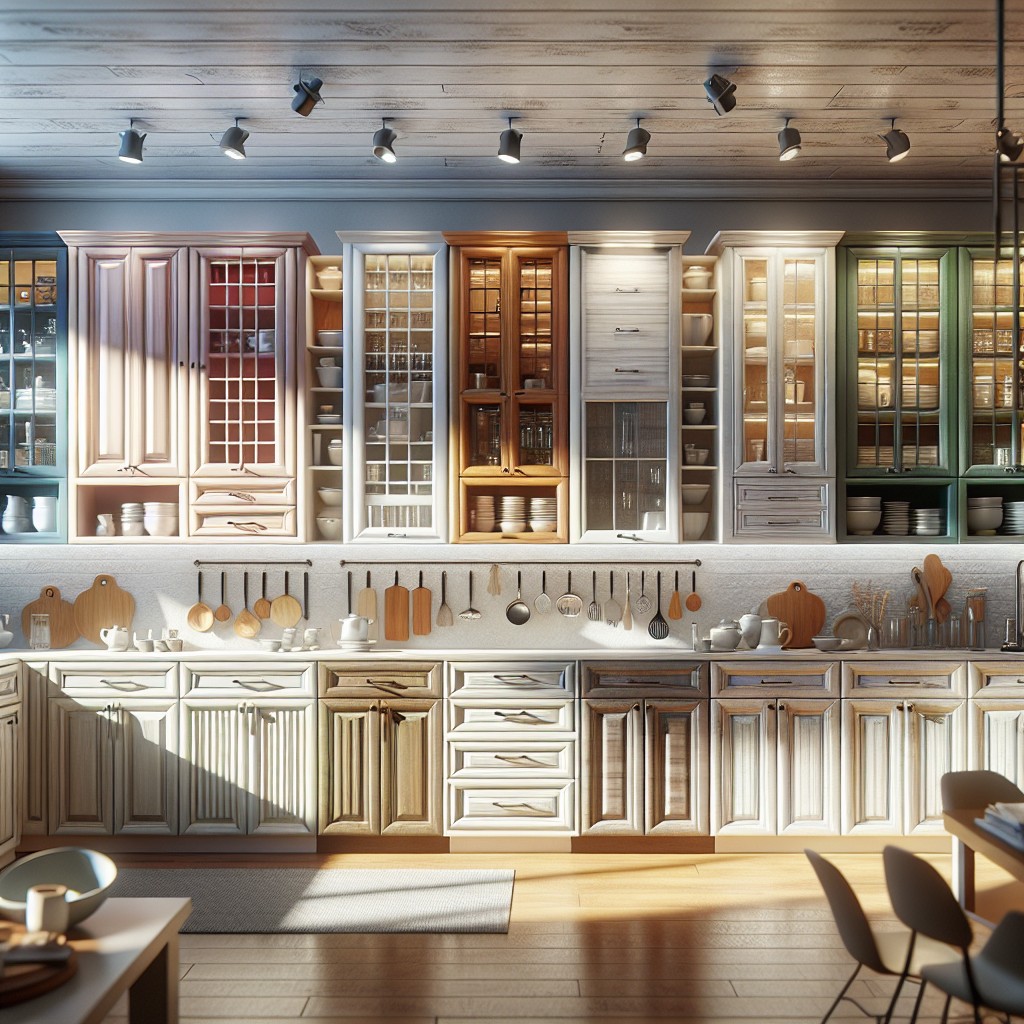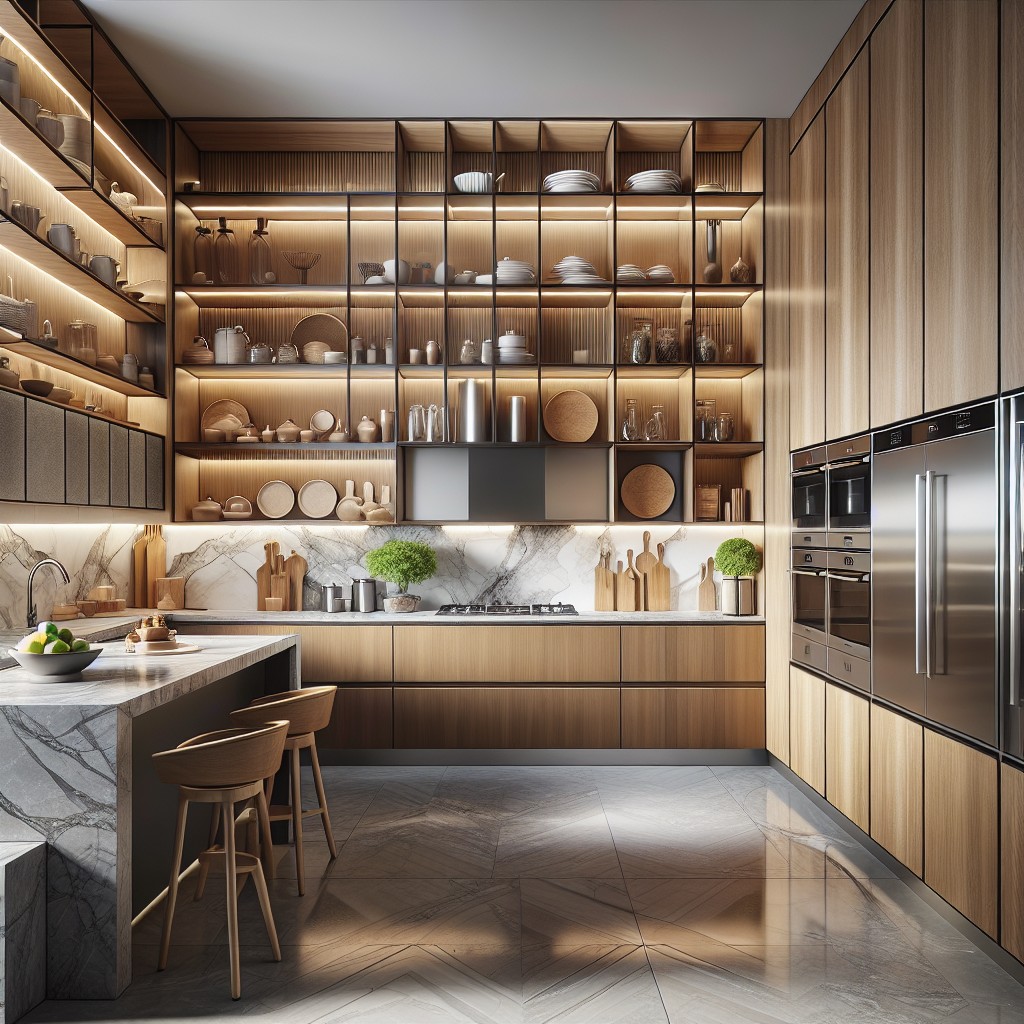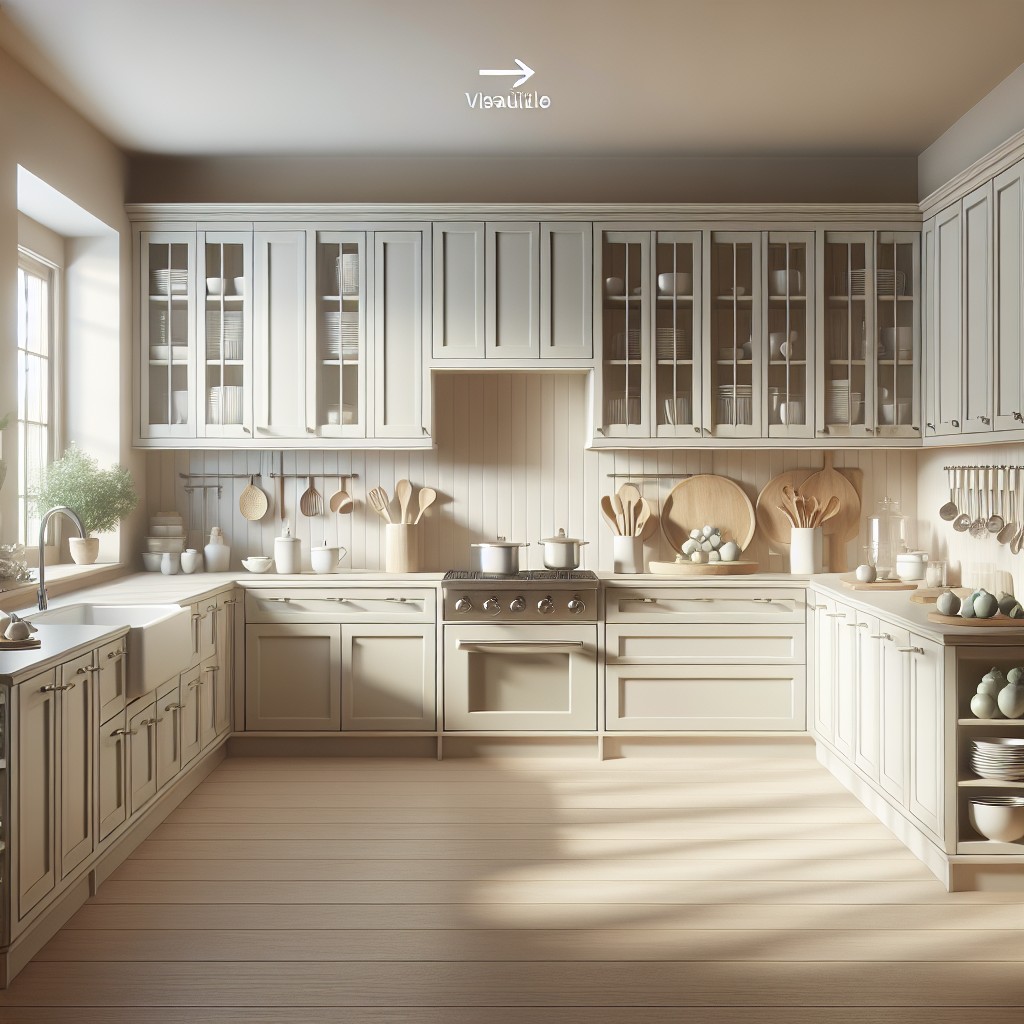Last updated on
In this article, you’ll understand the factors that influence the cost of cabinet installation.
Key takeaways:
- Cabinet installation costs range from 0 to 0 per linear foot for stock cabinets and 0 to ,200 for custom work.
- Factors that influence cost include cabinet style, number of cabinets, material choice, hardware, labor costs, additional features, and structural changes.
- Stock cabinets are the most affordable option, while custom cabinets are more expensive.
- DIY cabinet installation can save on labor costs, but hiring a professional ensures efficiency and quality.
- Money-saving tips include choosing stock cabinets, keeping the current layout, refacing or repainting existing cabinets, self-installation, and timing purchases for discounts.
What's Inside
Average Cabinet Installation Cost

When delving into the average costs for cabinet installation, you’re looking at a range that depends significantly on the scope of your project. Generally, homeowners can expect to spend between $100 to $300 per linear foot for stock cabinets, and this price jumps to $500 to $1,200 for custom work.
While these figures offer a broad stroke idea, it’s essential to realize that the specifics of materials, labor, and geographic location will immensely shape the final bill. To put it in perspective, let’s break down a typical medium-sized kitchen which might require around 25 to 30 linear feet of cabinetry, resulting in a rough estimate of $2,500 to $9,000 for the complete installation.
Keep in mind, high-end options and additional features can push costs even higher, making it crucial to assess your desires against your budget.
Factors That Influence Kitchen Cabinet Installation Cost
Cabinet style plays a significant role in determining cost. Stock cabinets are the most budget-friendly, offering standard sizes and finishes. Semi-custom options offer some degree of personalization, while fully custom cabinets are made to order and come with a heftier price tag.
The number of cabinets you plan to install directly impacts the cost. A larger kitchen requiring more units will naturally cost more compared to a smaller kitchen or partial renovation.
Material choice is also a critical factor. Solid wood cabinets are pricier than those made from MDF or particleboard. The durability and aesthetic quality of the material can greatly affect not only cost but also the lifespan and appearance of the cabinets.
Hardware choices, including handles and knobs, can add to the overall cost. Opting for high-end hardware or unique designs can increase expenses.
Labor costs fluctuate regionally and can significantly impact your installation expense. Additionally, the complexity of the installation – such as the need for customization or handling challenging spaces – can drive up labor charges.
Need for additional features like pull-out shelves, lazy Susans, or built-in organizers can add to the cost. These conveniences are worthwhile but come with a price.
Lastly, any structural changes required to accommodate the new cabinets, such as removing walls or re-routing plumbing and electrical work, will also affect the bottom line. These alterations often involve other professionals and must be factored into the overall cost.
Cabinet Style, Number of Cabinets, Additional Factors
Cabinet style significantly dictates price; stock options are the most affordable, while custom pieces come with a premium. Prefabricated cabinets are cost-effective but offer limited design choices, whereas semi-custom models provide a balance, allowing some degree of personalization at a moderate price increase.
The number of cabinets required obviously affects the overall expense. Smaller kitchens or partial remodels cost less, as fewer units are needed. Conversely, a large kitchen or a design with numerous cabinetry features will drive up the cost proportionally.
Several additional factors should be considered: Material choice ranges from budget-friendly laminate to high-end solid wood, impacting the end price. The complexity of the installation—if cabinets have intricate designs or need to be fitted into an irregular space, this can extend installation time and cost. Hardware quality can sneak up on the budget, with luxury handles and drawer pulls adding up. Lastly, don’t forget the potential for unexpected expenses, like correcting structural issues or outdated electrical wiring uncovered during installation.
DIY Vs. Hiring a Pro
Tackling cabinet installation as a DIY project can be tempting, especially for those with a knack for hands-on tasks. It has the potential to save you the labor costs that professionals charge. However, it’s crucial to assess your skills and the complexity of the job before diving in. Basic installations might be manageable for someone with good DIY experience and the right tools.
Conversely, hiring a professional ensures that the job is done efficiently and correctly, which is particularly important for custom or intricate cabinetry. This option also saves you time and the hassle of learning installation techniques from scratch. Professionals can handle unexpected issues that often arise during installation, such as uneven walls or floors, which could derail a DIYer. The warranty of your cabinets might also require professional installation to remain valid.
Keep in mind, hiring a pro provides peace of mind and typically guarantees a level of quality and longevity for your new cabinets that might be hard to achieve on your own. Consider the cost-benefit and your personal expertise before making a decision.
Money-saving Tips for Installing Kitchen Cabinets
Carefully examining where costs can be cut without compromising quality is essential. One such area is opting for stock cabinets over custom pieces. Stock cabinets come in standard dimensions and are mass-produced, making them significantly less expensive than custom cabinets, which are tailored to your specific space and preferences.
Another effective strategy is to retain your kitchen’s current layout. Shifting electrical and plumbing fixtures to accommodate new cabinet configurations can dramatically increase labor costs. By keeping the same footprint, you can minimize these additional expenses.
Refacing or repainting your existing cabinets is a cost-efficient alternative to full replacement. This can give your kitchen a fresh look at a fraction of the cost, especially if your cabinets are still structurally sound.
If you’re handy and have some basic tools, consider self-installation for a straightforward cabinet configuration. However, ensure you’re well-informed about the process and prepared to handle the precision required.
Lastly, timing your purchase can lead to savings—look out for promotions, seasonal sales, or even showrooms selling display models at a reduction. By employing these strategies, you can manage your cabinet installation budget effectively.
Continue reading:



